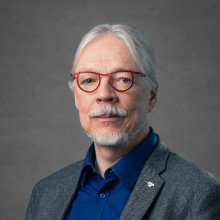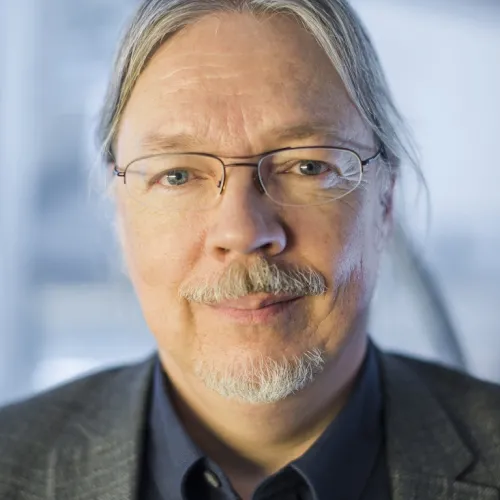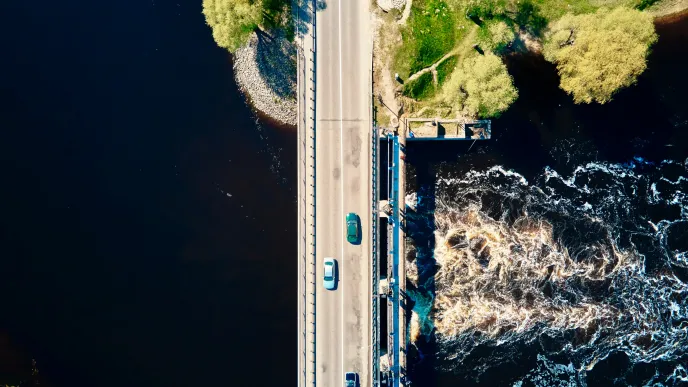LUT University's Nuclear Engineering Laboratory is developing a small modular reactor (SMR) for district heating. Its heat output is some tens of megawatts, whereas, for instance, the third reactor of the Olkiluoto nuclear power plant currently being built in Finland will have a thermal output of 4300 megawatts and an electrical net output of 1600 megawatts. In small nuclear district heating plants, the temperatures and pressures are much lower than in electricity production plants.
"The safety of a small modular reactor is based on its size, location and design solutions relying on natural laws," Professor Juhani Hyvärinen explains.
Is nuclear power safe near residential areas?
The cooling of the nuclear reactor LUT is developing will take place by circulating water with a pump. If disruptions occur and the pumps risk failure, the reactor will shut down. If the reactor shuts down, the necessary cooling will be based on gravity. When the water in the reactor starts to boil, the steam rises and meets cold wall surfaces, condensing and coming down as water. In other words, the core temperature of such a small reactor is more easily controllable than that of a large nuclear power plant.
A small modular reactor is also cost-efficient due to its serial production possibilities. In addition, almost all of the parts of the reactor could be manufactured, and the related expertise is available domestically in Finland.
"Also the nuclear waste can be processed safely in Finland. Only nuclear fuel is unavailable in usable form in Finland," Hyvärinen says.

Unmanned small reactors to guarantee heating in urban areas?
In terms of location, the safety of an SMR relies on its size. It is easy to build partly underground – even in a residential area. The reactor may be unmanned and requires no expansive safety zone around it. It could be located near a residential area, as heat cannot be transmitted hundreds of kilometres, unlike electricity.
Different types of SMRs are already in global use, especially in marine vessels. SMRs are currently being developed for power plant use around the world. According to Hyvärinen, the greatest risk is if the reactor stops working and is unable to provide heating.

"If the reactor breaks down, the radioactive materials are confined to an air-tight space sealed off from its surroundings."
Due to supply security and maintenance, Hyvärinen says one city requires at least two SMRs. How often, then, should the fuel of the SMR – the heavy metal uranium – be changed?
"The uranium is changed once every year or two. The amount of fuel changed is roughly 200 kilograms."
In the worst case scenario, what would happen if an SMR explodes as a result of, say, a terror attack?
"A small modular reactor has 100-200 times less radioactive material than a large, electricity-producing reactor. Even in the worst case, the radioactive emissions remain at a very low level," explains Professor Hyvärinen.
The serial production would require updating legislation
At the moment, half of Finland's district heat (roughly 20 terawatt hours) is produced by burning peat and coal. For district heating to be fossil free, approximately a hundred SMRs of some tens of megawatts should be located around Finland. Achieving this is still a rather distant goal. The serial production of SMRs would require updating legislation related to nuclear power.
"Our national legislation applies to large power plants and should be amended to cover the needs and possibilities of smaller actors as well. Is it even necessary for the Government to decide how Individual cities like Lappeenranta are heated? The municipality or a regional authority could make these decisions independently," Hyvärinen proposes.
National emission and climate policies can be influenced through decision-makers. LUT's mission is to produce information and alternative solutions for safe, emission-free energy production and to train experts to implement these solutions. LUT is the only university in Finland that provides nuclear engineering education at the Master of Science level.
"Our Nuclear Engineering Laboratory in Lappeenranta enables us to study physical processes involving accidents and disruptions both experimentally and computationally. We test the reliability of safety systems. Nuclear safety experts who have graduated from LUT are now working in key positions in all Finnish nuclear power plants and with the national nuclear safety authority," Hyvärinen relates.
The development of LUT's SMR is at a stage where the SMR's main processes are being dimensioned. Meanwhile, the reactor's construction, maintenance and life cycle costs are calculated to determine its realistic competitiveness as a heat producer.
"I believe that the small modular reactor we are developing will be in use in Finland within five to seven years," Professor Juhani Hyvärinen predicts.
Questions about nuclear energy
1. Can nuclear power be a fully domestic energy source in Finland?
The equipment, technology and expertise in nuclear power plants is mainly from Finland, and also the disposal of nuclear waste takes place in Finland. Uranium is imported, and its market is global. In other words, if a domestic mine yielded uranium, it would have to be processed for abroad before it could be used as fuel in a nuclear reactor.
2. Can nuclear power be considered a renewable source of energy?
Nuclear fuel is manufactured from uranium, which is a finite natural resource.
Nuclear reactors use less than one percent of the uranium extracted from nature. In the future, breeder reactors could utilise over 70 per cent of their fuel. Nuclear reactors with a closed nuclear fuel cycle would be sustainable.
3. Why does nuclear power face opposition?
Uranium, which has been used as the fuel, is high-level radioactive waste that can be harmful to the environment if it is not disposed of correctly. Nuclear waste is sealed off from the environment for over 100 000 years.
Also accidents at nuclear power plants have surely influenced people's opinions. However, the number of accidents that have occurred is minor in relation to the number of currently operational reactors, but in the worst case, a nuclear accident may render the vicinity of the power plant uninhabitable for a long period of time. Accidents have, nevertheless, led to the further development of safety measures at nuclear power plants.
4. What are the advantages of nuclear energy?
Nuclear power is the only energy source that has demonstrably reduced carbon dioxide emissions in electricity generation. Moreover, nuclear power plants ensure secure electricity production at a reasonable cost. The currently known uranium resources for fuel will last for several hundred years, but the Earth's crust is anticipated to hold manifold this amount. Emission-free nuclear power plays a significant role in curbing climate change. Small modular reactors enable the rapid reduction of carbon dioxide emissions due to district heating.
Answers: Juhani Hyvärinen, professor

More information:






